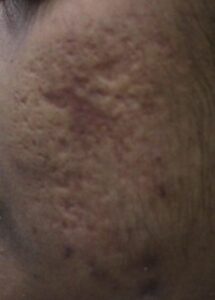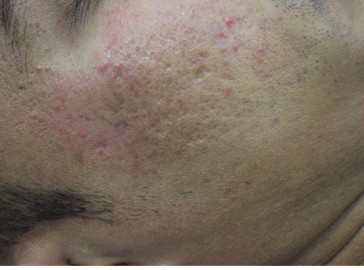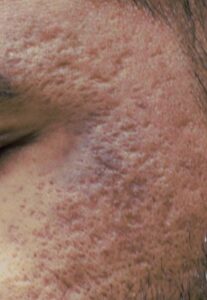Acne-Scars
Acne scars are marks or textural changes left behind after acne breakouts have healed. They form when the skin’s deeper layers are damaged by inflammation, often worsened by habits like picking or squeezing pimples.
How Do Acne Scars Develop?
Acne scars are marks or textural changes left behind after acne breakouts have healed. They form when the skin’s deeper layers are damaged by inflammation, often worsened by habits like picking or squeezing pimples.
- Excess collagen: Leads to raised scars, such as hypertrophic or keloid scars
- Insufficient collagen: Results in depressed or sunken scars, known as atrophic scars


Identifying the type of scar is key to choosing the most effective treatment. At Amaran, we offer customized solutions to smooth and restore scarred skin.
Types of Acne Scars
1. Atrophic Scars (Depressed Scars)
These are the most common acne scars, caused by a loss of tissue.
- Icepick scars: Deep, narrow, and pitted
- Boxcar scars: Broad, sharp-edged depressions
- Rolling scars: Wide, shallow, wave-like depressions
2. Hypertrophic Scars
- Raised, firm scars that stay within the boundary of the original acne spot. More common on the chest and back.
3. Keloid Scars
- Raised scars that grow larger than the original acne area. These can be itchy or painful and are more common in people with darker skin tones.
4. Post-inflammatory hyperpigmentation (PIH)
- Dark spots or discolouration left after acne heals. These usually fade over time and are more common in people with medium to dark skin.
Causes of Acne Scars
1. Severe or Deep Acne
- Cystic acne and other deep, inflamed blemishes damage skin tissue beneath the surface.
- The deeper the inflammation, the higher the risk of permanent scarring..
2. Picking, Squeezing, or Popping Pimples
- Damaging the skin by squeezing or picking disrupts healing and increases inflammation.
- This often leads to more noticeable and permanent scars.
3. Delayed or Improper Treatment
- Untreated or poorly managed acne can lead to prolonged inflammation, increasing the risk of scarring.
4. Imbalanced Healing Response
- Too much collagen during healing can lead to raised scars (hypertrophic or keloid).
- Too little collagen leads to depressed scars (atrophic types like icepick, boxcar, or rolling scars).
5. Genetics
- A family history of acne scarring can make you more prone to developing scars, even with mild acne.
6. Skin Type & Sensitivity
- Some skin types are more prone to post-inflammatory hyperpigmentation or scarring due to how they heal.
